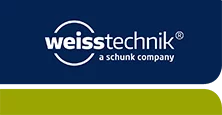A system for carrying out water shock immersion tests on large batteries in the e-mobility sector was required for the new test laboratory of a leading international certification body. Weiss Technik developed and supplied a solution that enables tests in accordance with LV 124 K13, ISO 16750-4 (immersion test) and ISO 20653 (IPX7 immersion test), among others.
Special equipment for a new multi-test centre
A large certification body was looking for a specialist to install a water shock test system. This equipment was to be used to test Li-ion batteries for electric vehicles in accordance with test and standard specifications LV 124 K13, ISO 16750-4 and ISO 20653. Based on its many years of experience with testing equipment in the automotive sector, Weiss Technik has developed a customised system concept that is suitable for both near-series test specimens and prototypes.
Sophisticated test setup for lightning-fast cooling
LV 124 is a comprehensive test specification in the automotive sector and includes test section K-13 “Thermal shock immersion”. In the first step, the test specimen is heated to its maximum operating temperature. Within 5 s, the specimen is immersed in a salt water bath (5% NaCl) of around 0°C where it remains for five minutes. After removal, the test specimen is heated and immersed again (20 cycles). A particular challenge was to lower the heavy weight of the test specimen (up to 1,200 kg) in a controlled manner within the prescribed 5 s. Weiss Technik was able to draw on its experience with similar systems and develop a safe and reliable solution.
Unique system with impressive dimensions
Only a few test centres in the world have such a large test system with dimensions of 6,680 × 5,500 × 5,100 mm (W×D×H) for standard-compliant tests in accordance with K-13. Because of the height of the system, it was recommended that it be set up either on two accessible levels or in a pit in order to allow the test specimen to be inserted at ground level. Because of the corrosive atmosphere, the test space and installations needed to be made of high-alloy corrosion-resistant materials.
Quickly lower connected test specimens
The test system consists of four main components: the air space of the actual test chamber, a water basin underneath, the steel structure, and the machine unit, which is positioned behind the system. During the test, the test specimen is fixed on a lifting platform and lowered evenly into the water basin after heating using electric drives. The drive technology is designed in such a way that offsetting the centre of gravity of the test specimen does not influence the movement. The test system also has an energy tracking system for the test specimen; this ensures that the cables are securely guided during the vertical movement. This enables the continuous contacting and monitoring of the test specimen in various operating modes during the test.
Further specification
The platform on which the test specimens are fixed measures 2,900 × 1,900 mm and allows maximum test specimen dimensions of 2,500 × 1,700 × 750 mm (W×D×H). The maximum permissible immersion volume is 3.18 m3, and the maximum test specimen weight is 1,200 kg. The heating rate in the test space is 2 K/minute. The water basin is equipped with a cooling device and a circulation pump, which ensure a constant water temperature of around 0°C. The test system can be seamlessly integrated into the existing building management system via standard interfaces.
Weiss Technik stands for proven testing technology
The test solution supplied is based on a proven system concept and the many years of experience of Weiss Technik as a specialised partner to the automotive industry. Equipped with an S!MPAC controller and a Web Season connection, the test system enables simple programming of test sequences, offers a multi-user function, and allows worldwide access via tablet or computer. The ingenious air guidance ensures a high temperature constancy in the test space.
Safety equipment for Li-ion batteries
The test system allows batteries up to Hazard Level 6 to be tested. Together with the test centre, Weiss Technik has developed a safety concept that includes both factory-set components and on-site safety precautions. The system is equipped with visual and acoustic alarm functions as well as an electric door tumbler in order to prevent unauthorised opening during tests or in the event of a test specimen accident. Other safety features include pressure relief flaps, a fresh air purge, and CO and CH gas detection. The system also had be installed in a separate fire compartment. A high-pressure water mist system was to be planned on site to cool the test space during a thermal runaway.
Smooth realisation of the project
The system was developed in co-operation with partner companies and finally assembled in Central Hesse. After an intensive factory test run, it was dismantled into several components for transport. The division into individual components was designed in such a way that it would be possible to quickly assemble and put the system into operation on site.
Reprint free of charge. Please cite Weiss Technik GmbH as the source.

